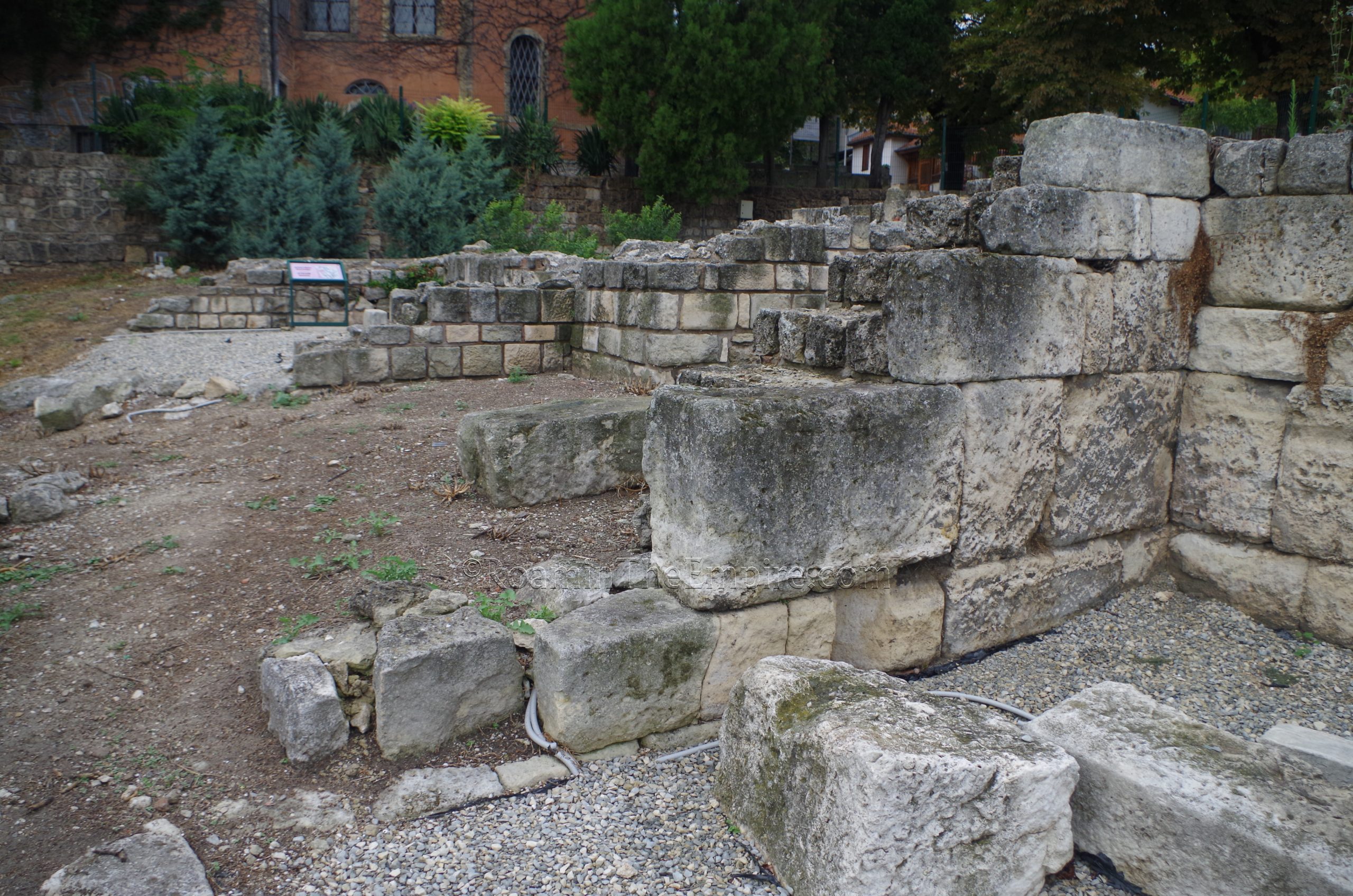
Ancient Odessus (also called Odessos, Odesopolis, and Odyssos), the precursor to the bustling Black Sea port city of Varna in present-day Bulgaria, was originally founded by Greek colonists from Miletus in the first half of the 6th century BCE. Prior to the arrival of the Greeks, the area was inhabited by Thracian populations dating back to perhaps as early as the 13th century BCE, and may have included a settlement on the site of the eventual Greek colony. The location of Odessus at the head of a narrow gulf (officially now Lakes Beloslav and Varna) where the River Panysus (modern Provadiyska) enters the Pontos Axeinos (Black Sea), provided a particularly rich spot for a trade hub.
Odessus was one of five Greek cities that made up a league of affiliated cities on the Black Sea called the Pontus Pentapolis. In 339 BCE, Philip II attempted to take the city by siege, but a peace agreement was signed before the siege could be resolved. Just a few years later in 335 BCE, Odessus would fall to Alexander the Great, and following Alexander the Great’s death, would pass into the control of Lysimachus. The city was among the Black Sea territories that revolted against Lysimachus in 313 BCE, but was unsuccessful. The Celtic invasions of the area in the increased pressure on the surrounding Thracian groups, seeming to have the effect of increasing the multicultural makeup of Odessus, amplified by the increasing prosperity of the city under Lysimachus’ rule.
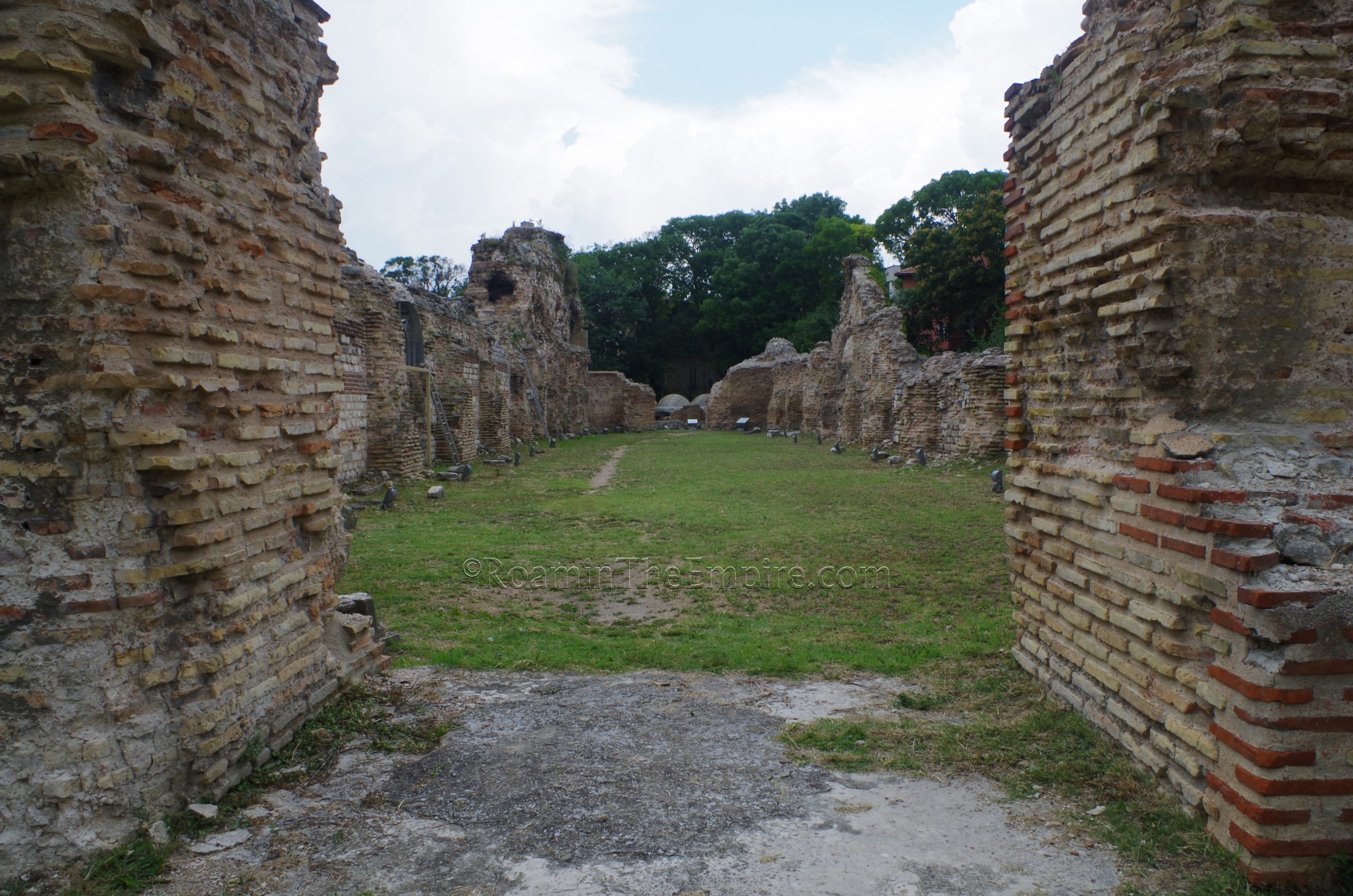
About 108 BCE, Odessus passed into the control of Mithradates IV Eupator. As part of the actions of the Third Mithridatic War, the proconsul of Macedonia, Macrus Terentius Varro Lucullus conquered Odessus as part of campaigns against the interests of Mithradates IV. Not long after Roman conquest, the city seems to have been destroyed around 50 BCE during the Thracian king Burebista’s conquest of the Pontic cities .Under Roman hegemony, Odessus was initially part of the Praefectura Orae Maritimae, a Roman territory on the western Black Sea coast, but by 15 CE was incorporated into Moesia. When Moesia was split by Domitian in 87 CE, the city became part of Moesia Inferior. The further division of Moesia Inferior in under Diocletian placed Odessus in Moesia Secunda.
Odessus initially weathered the Gothic incursions of the 3rd century CE, even benefiting from the destruction of Marcianopolis in 238 CE, and remained under Byzantine control after the fall of the Roman Empire in the west.
Getting There: Varna is the third largest city in Bulgaria (behind Sofia and Plovdiv, respectively) and is a popular destination among European holiday makers, so it is fairly accessible from other parts of the country and around Europe. This is particularly true in the summer with flights coming in from around Europe; especially on low cost carriers from Northern Europe. Typically there are several departures from the capital city of Sofia to Varna daily, but the travel time is quite lengthy, clocking in between 7.5 and 14.5 hours depending on the train. Prices typically start at about 54 BGN for the faster trains with slight reductions on the longer trains. Schedules can be checked here. A flight to Varna is probably the best use of time. Even by car, it’s well over 5 hours from Sofia. Once in Varna, though, the Remains of Odessus are pretty well centralized in the walkable historic center of the city.
The first stop on the itinerary through Varna is the Archaeological Museum Varna. The museum is located at Maria Luisa Boulevard 41 (Княгиня Мария Луиза 41). It is open every day in the summer (June through September) from 10:00 to 17:00. The rest of the year the museum is open from 10:00 to 17:00, but is closed on Sunday and Monday. Admission is 10 BGN. There is an additional fee of 10 BGN if you want to take pictures in the museum.
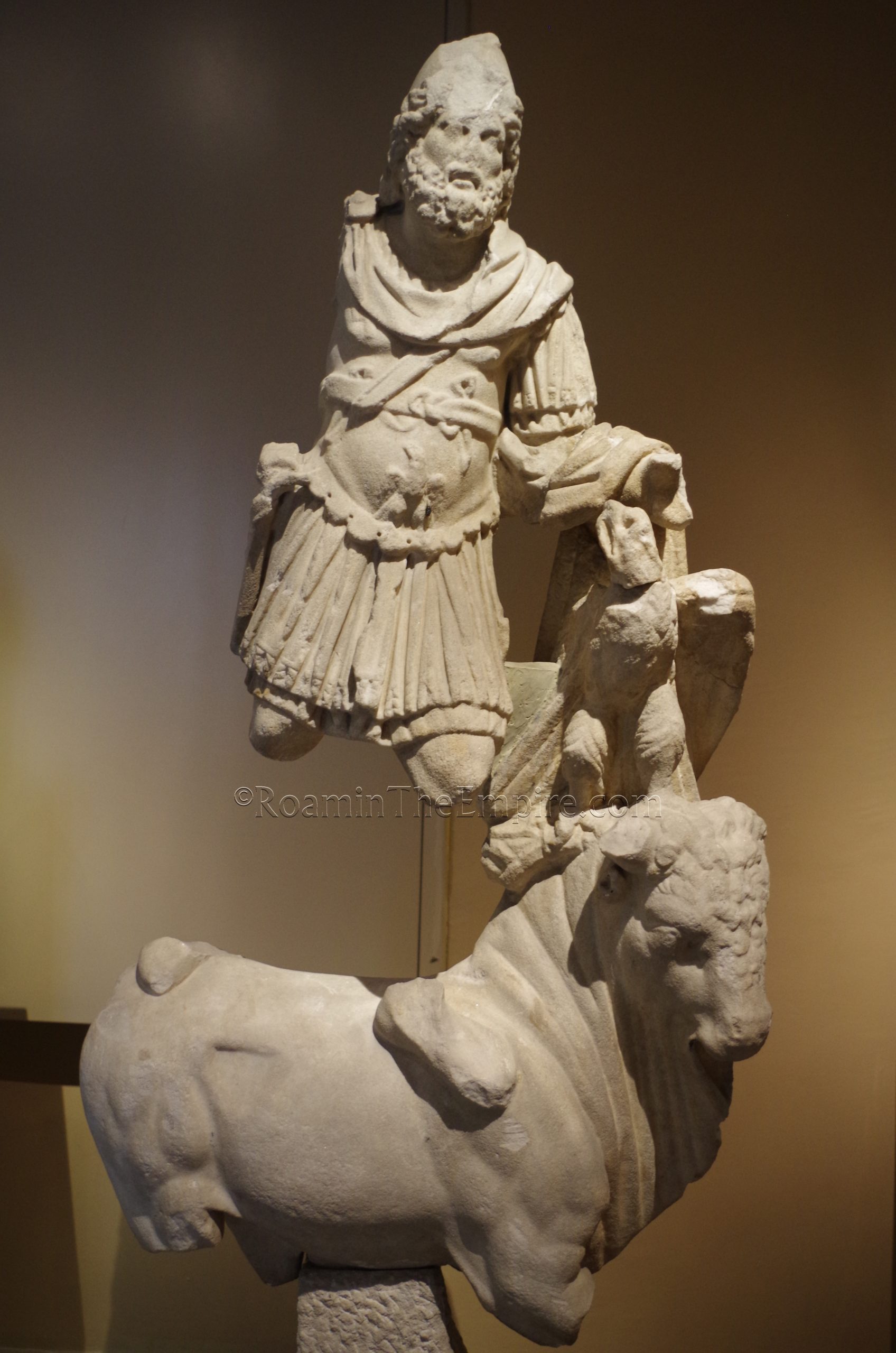
The collection at the regional archaeological museum of Varna is fairly extensive. I’m not necessarily going to say I was surprised, but, it was certainly a bit more robust than I had expected. The museum is essentially laid out with a chronological progression from pre-history through to early modern periods. The emphasis of the antiquity collection is local artifacts, though there are also some objects from the larger region around Varna. This collection includes a number of Thracian and Greek pieces from before the Roman occupation of the area.
For the Roman collection, there is a pretty wide breadth of objects from small finds up through large statuary pieces. Like I’ve found with other regional archaeological museums in Bulgaria, there’s a pretty extensive selection of votive slabs from the 2nd to 3rd century CE representing a number of different deities. There is also quite a nice collection of smaller bronze votive figurines. One of the particularly interesting artifacts, I thought, is a fragmentary, but still relatively complete statue of Jupiter Dolichenus.
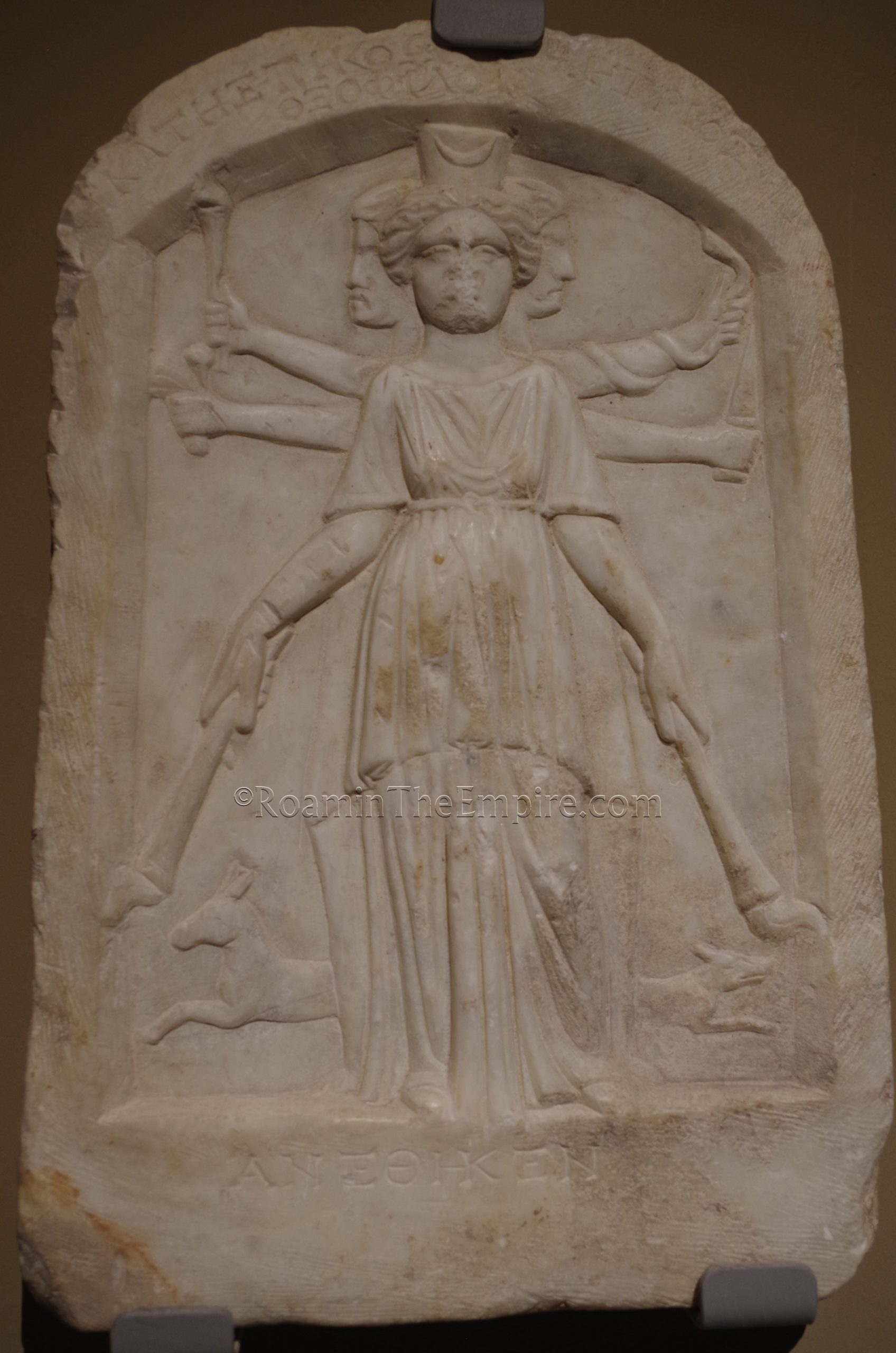
Overall, it’s a very well presented collection, for the most part. Most objects have English descriptions or identifications in addition to the Bulgarian, which is helpful. All told, I spent a solid hour and a half to two hours in the museum, and that was primarily focused on the ancient collection with a sort of cursory perusal of the pre-history and post-antiquity collections.
A few blocks south of the archaeological museum is a little café called Café Muro, located at Ivan Vazov Street 9 (ул Иван Вазов 9). The café is typically open 9:00 to 20:30, except on Sundays when it is closed. Located inside the café and visible via the glass floor and glass partitions are some remnants of the northern course of the city fortifications as well as part of the aqueduct as it entered Odessus through the fortifications; found during the construction of the building that houses the cafe. Both are dated to initial periods of construction in the 4th century CE with subsequent constructions in the 5th and 6th century CE. It is a business, so there’s no associated entrance fee.
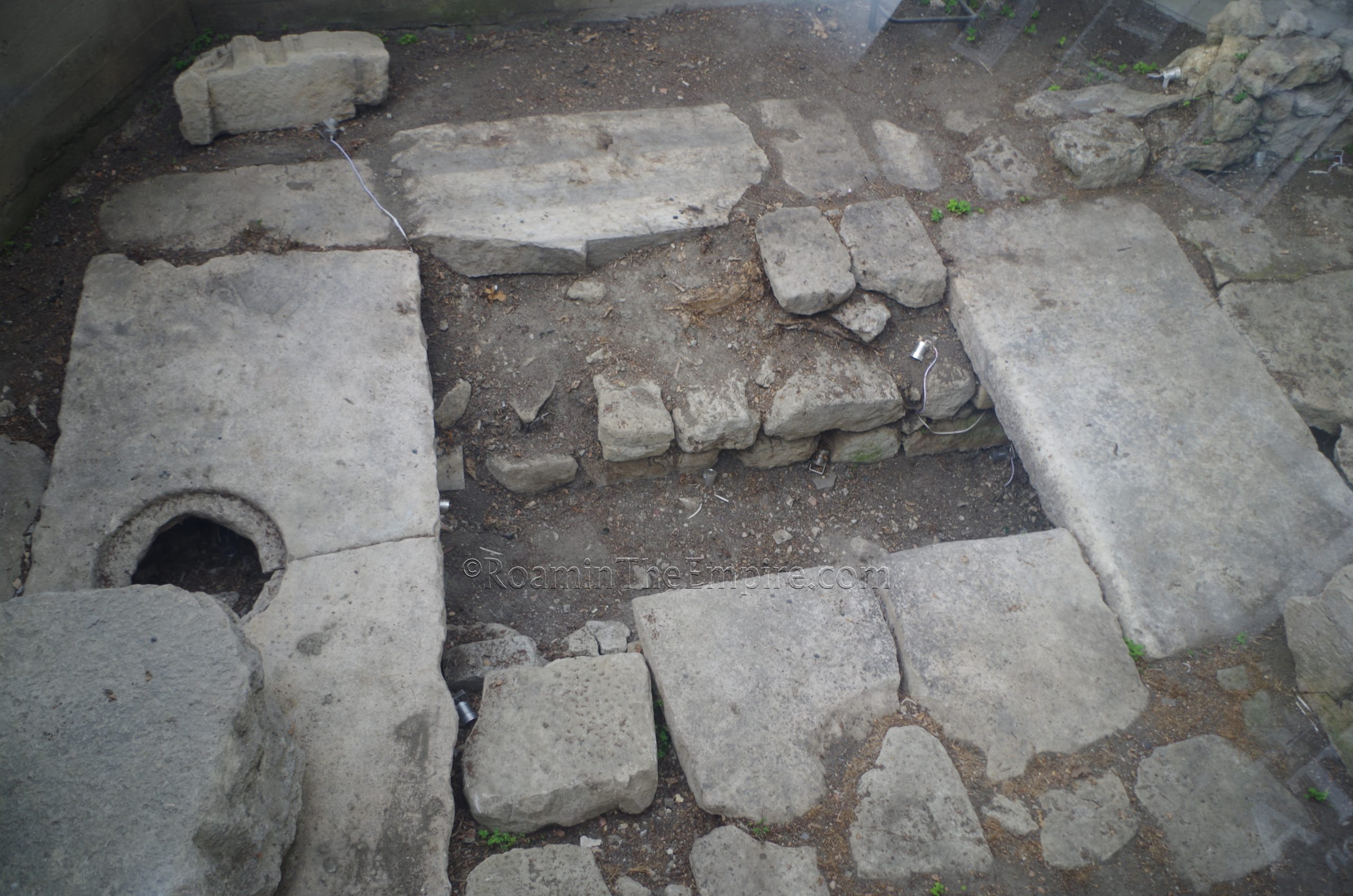
A few blocks to the southwest, near the intersection of Boulevard Knyaz Boris I (бул. Княз Борис I-ви) and Preslav Street (ул. Преслав) is a small excavated area that contains some remnants of a Roman road and sewer system visible through a glass covering. This is in a public area and is always visible, in fact, it’s even lighted at night. The road and sewer originally date to the 2nd to 3rd century CE, with reconstruction in the 4th or 5th century CE. A small informational sign in English and Bulgarian gives this basic information.
About a half a kilometer to the southeast are the primary archaeological site of Varna, the Roman baths; located at San Stefano Street 13 (ул. Сан Стефано 13). The baths are open Tuesday through Sunday in the summer (May through October) from 10:00 to 17:00 and are closed on Mondays. The rest of the year, the baths are open Tuesday through Saturday from 10:00 to 17:00 and closed on Sunday and Monday. Admission is 4 BGN.
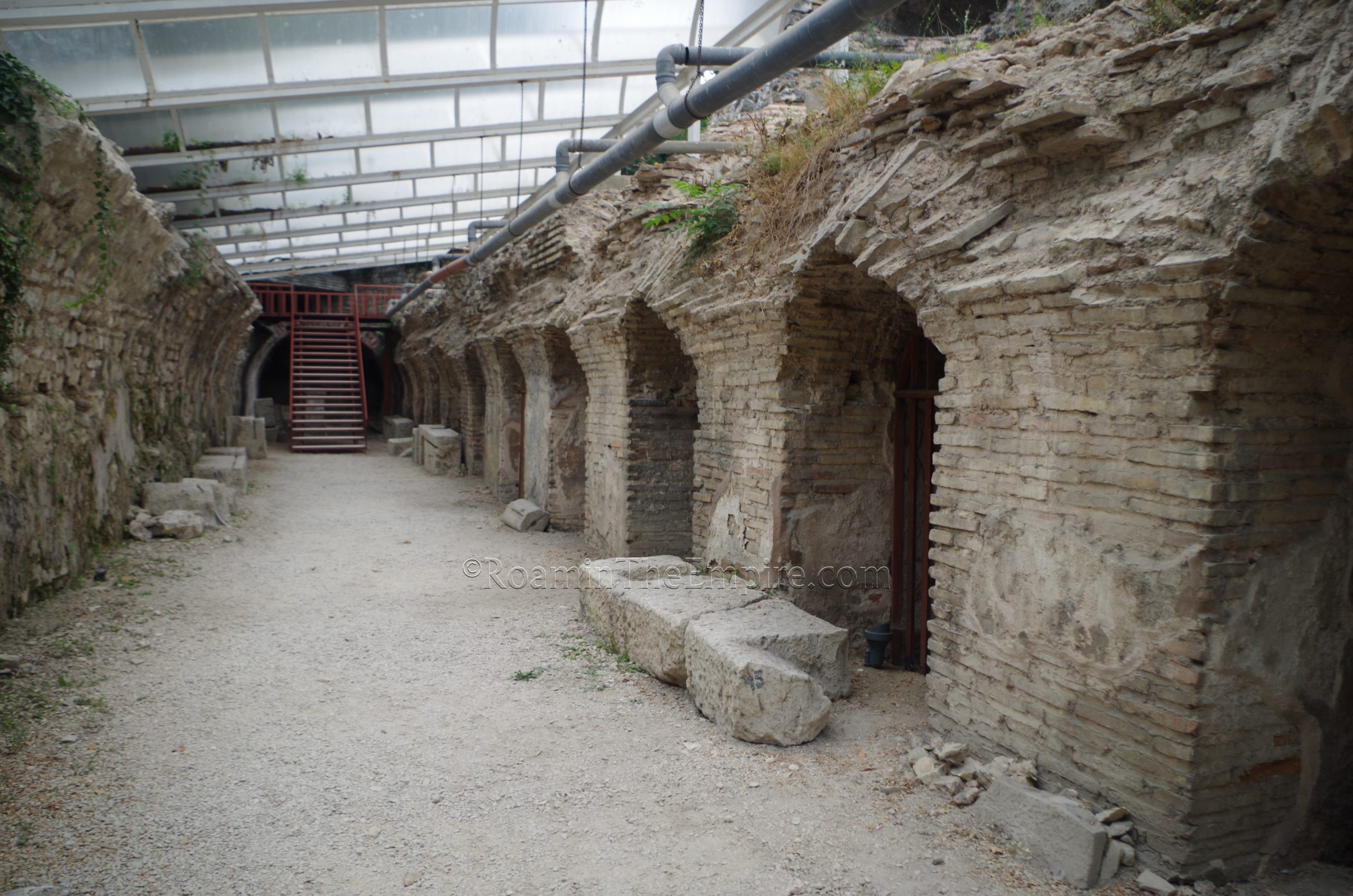
This bathing complex was originally constructed in the late 2nd century CE and only functioned for about a century before they were abandoned in the late 3rd century CE. At around 7,000 square meters of area, these baths are the largest in the Balkans, and the fourth largest Roman baths in the entire empire behind the baths of Caracalla and Diocletian in Rome, and the imperial baths at Augusta Treverorum (Trier, Germany). Like these other baths, the baths at Varna too have the typical mirrored layout of imperial bathing complexes. The northern two thirds of the baths are mostly intact, housing shops, a hall, the frigidaria, and the apodyterium. The southern third of the baths, primarily housing the heated rooms, is mostly gone, except for one of the caldaria.
There’s not a whole lot preserved beyond the sort of bare bones of the structure, though the walls are preserved to a rather impressive height in some areas. The cryptoporticus near the entrance is certainly interesting and the shape of the pools in the frigidaria largely remains. Though the surviving caldarium is mostly inaccessible, some remains of the adjacent hypocaust system there are visible. Considering the size and importance of the building, the information was a little bit lacking, though what was there was in Bulgarian and English, which was somewhat helpful. All told, I only spent about a half an hour at the baths, which was a bit less than I expected. It’s certainly worth visiting, but, again, there is little to distinguish one room from another for the average visitor.
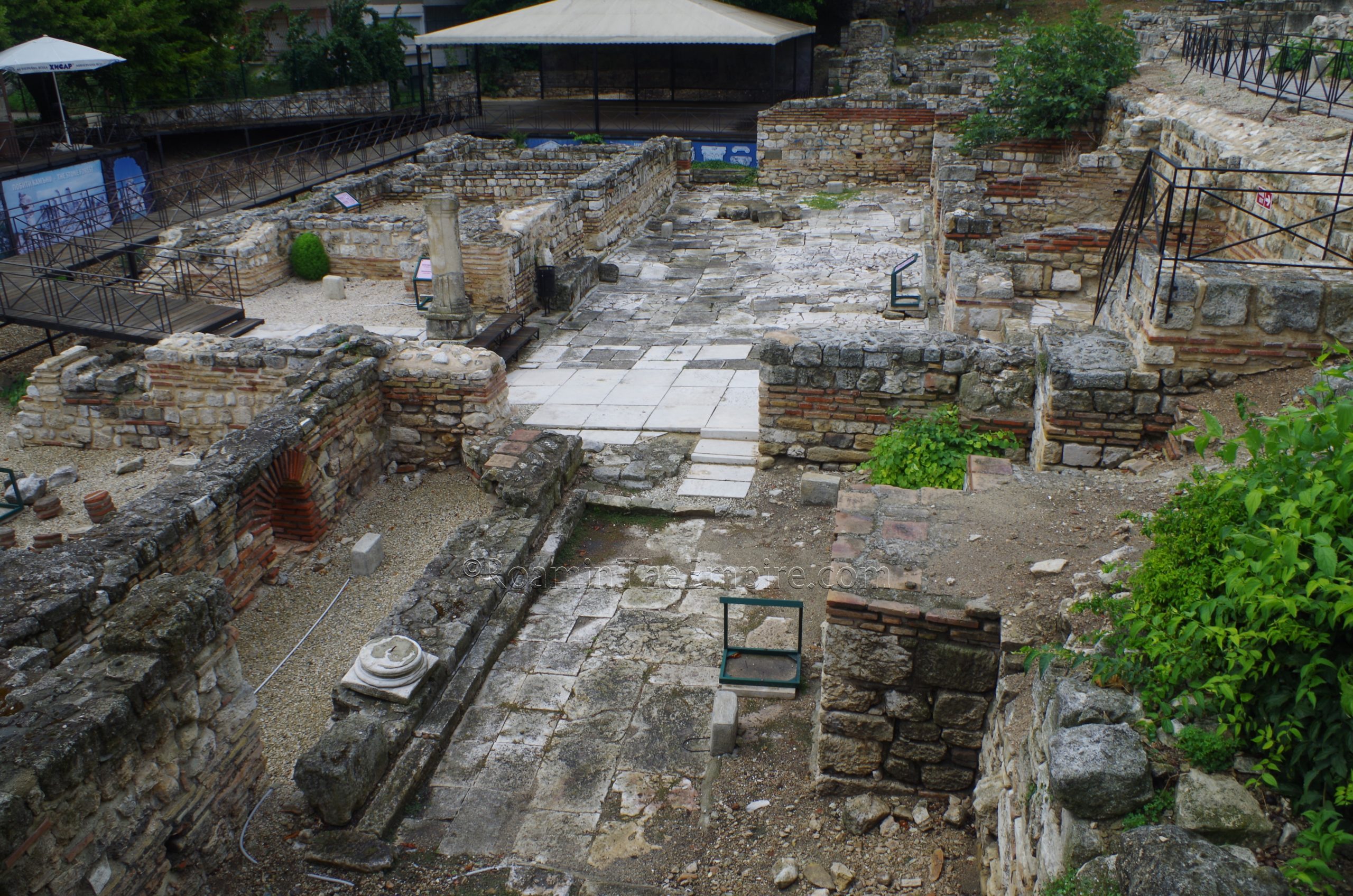
A few blocks to the south of the baths are another, smaller set of baths. These are distinguished from the imperial bathing complex by being called the small baths. Located at Boulevard Primorski 12 (бул. Приморски 12). The baths are open daily between 10:00 and 17:00, except for Monday when the baths are closed. Admission is 2 BGN.
Though much smaller than the larger imperial baths, there is arguably more detail and nuance preserved. These baths were originally constructed in the 5th or 6th century CE, notably after the larger bathing complex had been abandoned and fell into disrepair. The baths also seem to have been built on an earlier Thracian sanctuary honoring Apollo and Aphrodite, elements of which are visible in the northeast corner of the site. Again, much more detail is preserved in these baths with some of the hypocaust system visible in the heated rooms, some paving stones in-situ in the main hall, and with traces of marble revetment visible in at least one of the shops off the main hall.
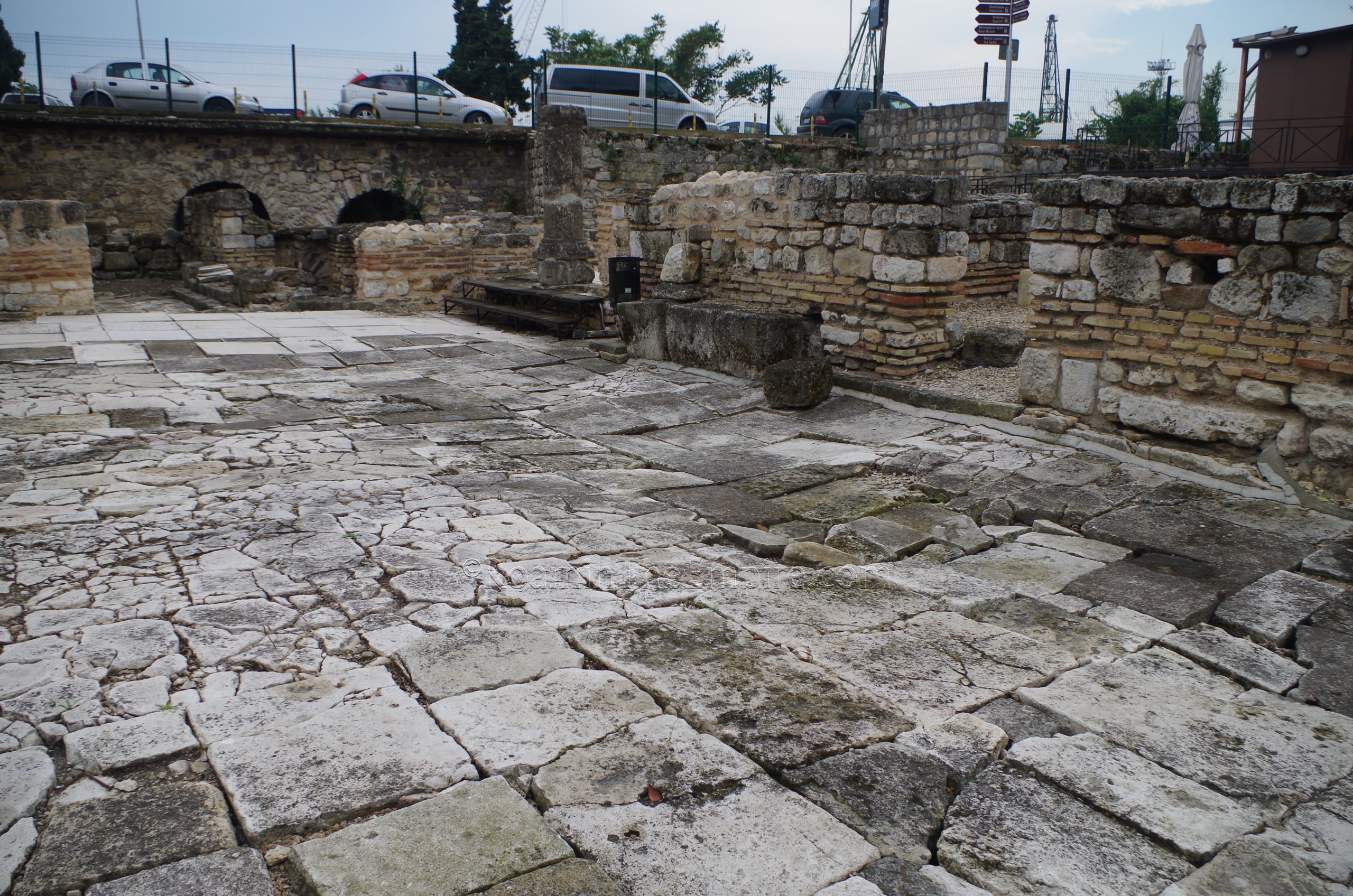
It only takes about 15 to 20 minutes to go through the baths here, but, again, I think there’s a lot more nuance to the remains here than the larger baths, particularly for the more casual observer. Again, there’s not much information, just room identifications in English and Bulgarian.
Just across the street to the east (8-mi Noemvri Street, ул. 8-ми ноември) are the remains of an ancient wall enclosed within the modern building and separated by a small fence. While I couldn’t find much in the way of information for this, a plan found at the small baths seems to indicate that this wall was associated with a temple of uncertain dedication. The wall is visible from the public street, so it can be seen at any time.
It is also worth mentioning that a few blocks north of the larger baths are the remains of an early Christian basilica, dating to perhaps the 5th or 6th century CE and apparently the source of a number of mosaics in the archaeological museum. It is located at the intersection of Knyaz Aleksander Batenberg Street (ул. Княз Александър Батенберг) and Han Krum Street (ул. Хан Крум). The upkeep for the site is quite bad, though; apparently in a state of neglect, it is overgrown and often littered with garbage. It can be seen from public areas at any time, but, again, the state of upkeep makes it hard to recommend even going out of one’s way to see. Hopefully future interventions will improve the situation.
Overall, the remains of Odessus can easily be seen in a single day, and the total time is pretty largely dependent on the time spent at the archaeological museum, which is easily the most time consuming of the stops.
Sources:
Ammianus Marcellinus. Rerum Gestarum, 22.8.43.
Appian. Illyrike, III.5.30.
Diodorus Siculus. Bibliotheca Historica, 19.73.
Grant, Michael. A Guide to the Ancient World: A Dictionary of Classical Place Names. New York: Barnes & Noble Books, 1997
Ovid. Tristia, 1.9.
Pliny the Elder. Historiae Naturalis, 4.18.
Smith, William. Dictionary of Greek and Roman Geography. Walton & Murray, 1870.


